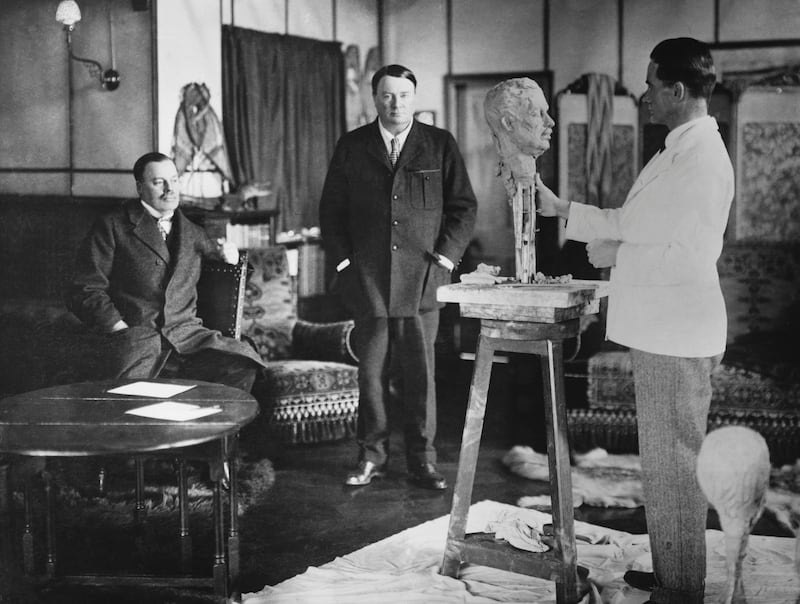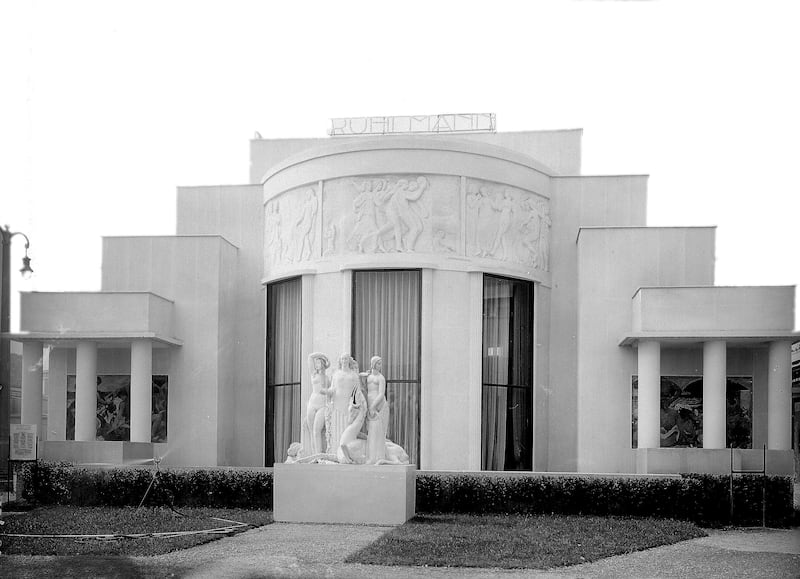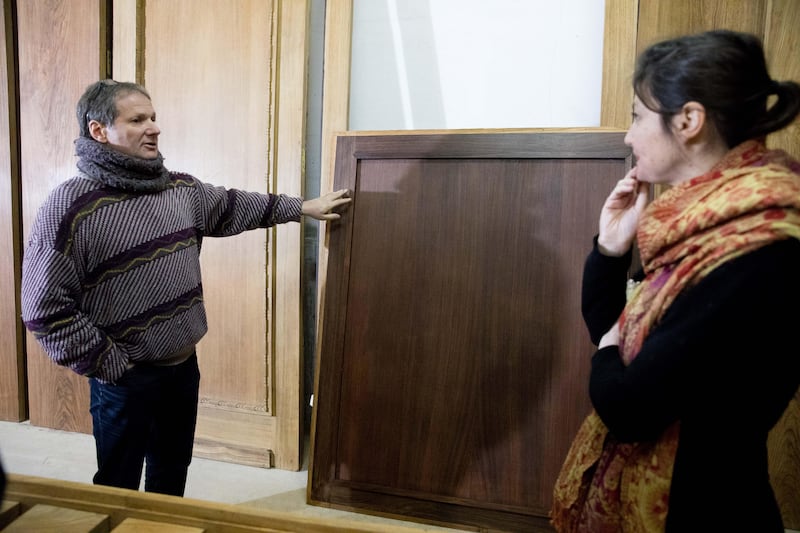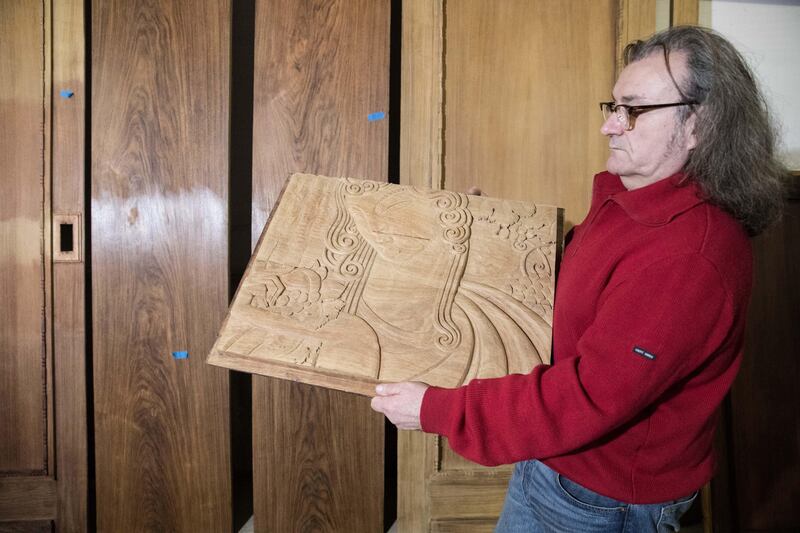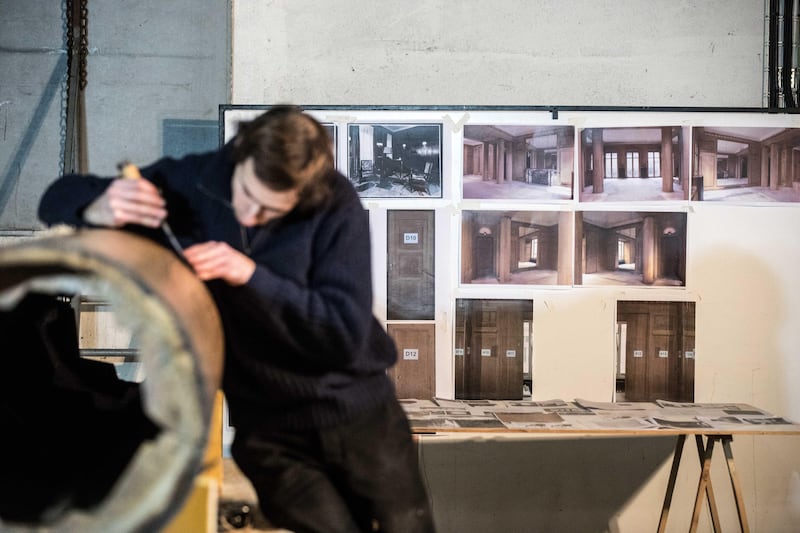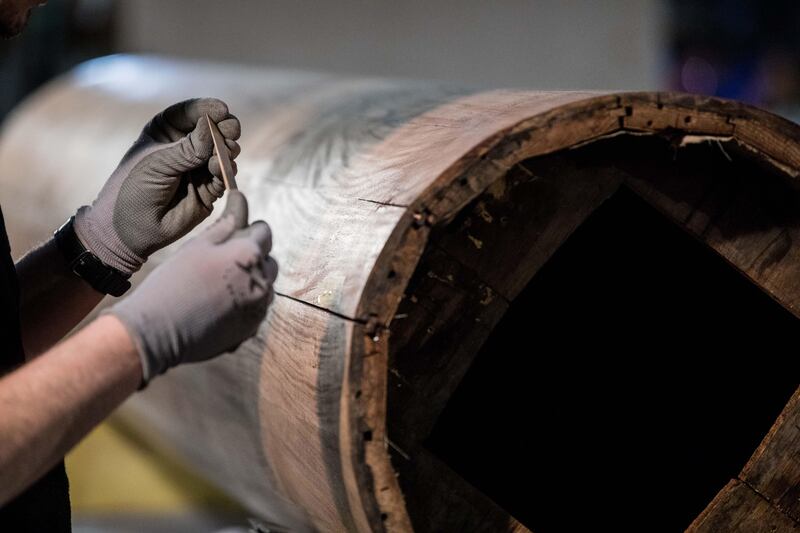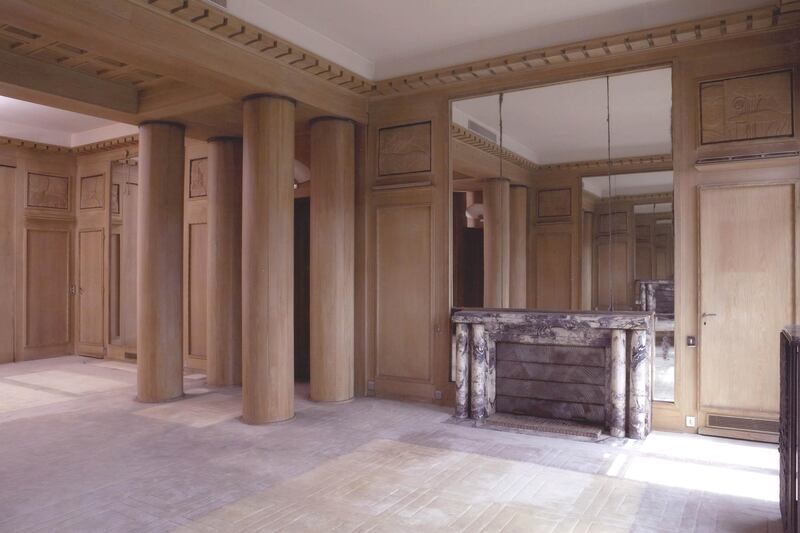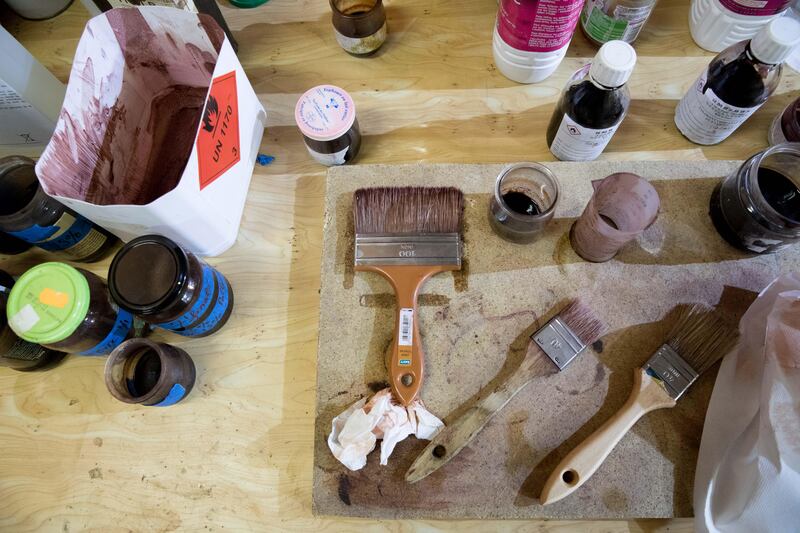More than nine decades and 200 kilometres stand between the luminous glories of Jazz Age Paris and an isolated rural workshop in eastern France where a team of restorers are quietly plying their trade, sanding and waxing, repairing and filling a wood-panelled interior that once belonged to a luxurious Parisian grand salon. It will soon be one of the star exhibits at the Louvre Abu Dhabi.
In the same way that New York's Metropolitan Museum of Art boasts a period room designed by architect Frank Lloyd Wright, the Louvre Abu Dhabi will have its own historic interior, a luxurious suite that epitomises the work of Jacques-Émile Ruhlmann, a designer whose creations are now synonymous with the highest achievements of French interwar design.
The object of the conservator's attention, the suite was designed for an apartment at 154 Avenue des Champs Élysées that once belonged to a British aristocrat, Harold Harmsworth, the first Viscount Rothermere.
The younger brother of the first Viscount Northcliffe, with whom he founded the British national newspaper the Daily Mail in 1896, Harmsworth owned three morning newspapers, three national Sunday newspapers, two London evening papers, four provincial daily newspapers and three provincial Sunday newspapers by the time he employed Ruhlmann to decorate his apartment.
The Rothermere commission followed Ruhlmann's participation at the 1925 Paris fair, the Exposition Internationale des Arts Décoratifs et Industriels Modernes, where the designer built a hugely ambitious and popular interior, the Hôtel du Collectionneur (House for a Collector), in a pavilion designed by architect Pierre Patout.
The Paris Exposition is now remembered as the event at which Swiss architect Le Corbusier exhibited his shocking Modernist experiment, the Pavillon de l'Esprit Nouveau, but in 1925, it was the highly decorated and luxurious French pavilions that captured the imagination of the fair's estimated 16 million visitors, and Ruhlmann was the undoubted star of the show.
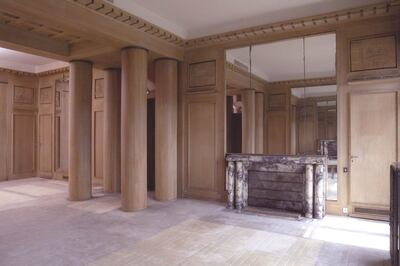
Among exhibits mounted by designers such as glassmaker René Lalique and displays dedicated to major French retailers such as Bon Marché and Galeries Lafayette, Ruhlmann's House for a Collector was seen as the epitome of uncertain chic à la française, which appeared to have emerged so spectacularly at the fair.
France may have emerged from the First World War physically scarred and psychologically traumatised, but in 1925, Paris exploded back into life, outshining every other city on the planet with its elegance and savoir faire, becoming a hub of creativity and producing ideas that influenced the world.
In choosing to have an apartment in Paris, the Viscount Rothermere was simply conforming to the same centrifugal forces that were attracting the rich, fashionable, inspired and visionary to the French capital, from all over the world.
Paris of the 1920s was a place that looked to the future and seemed to have shaken off the past in favour of a forward-looking, optimistic spirit of enquiry that could be seen across the arts.
While artists such as Picasso and Matisse were reinventing line and colour, Coco Chanel was modernising women's fashion, as Ezra Pound and James Joyce experimented with language.
A resident of Paris since 1921, Ernest Hemingway famously wrote that prose is architecture, not interior decoration, but if that was the case, then Ruhlmann was using wood and marble to create a poetry all of his own.
"Ruhlmann was an ensemble decorator; he had a total idea of his art and working on this project has given me a very deep respect for him," explains Juliette Singer, a curator with Agence France-Muséums, the body charged with providing technical support for the Louvre Abu Dhabi.
"He made reference to the decorative art of the 18th century, but from the 1920s and 30s, he also began to make references that were both classical and very modern," she explains. "He had everything in his mind, so it is difficult to operate at a similarly high level."
As well as being responsible for leading the Ruhlmann conservation project, Singer is also curator for the Saadiyat Island museum's holdings of modern and contemporary art from the 19th century to the present.
"He made all of the [design] drawings himself and then employed specialists for every material and at every stage of the design and construction process," Singer says, describing a process that sounds very much like the one that is being used for the salon's conservation.
"First, it's a technical masterpiece, but then you have to understand what Ruhlmann wanted to achieve and then you have to understand how his team built it and made his vision happen," she explains of the interior, which is constructed from 136 pieces, all of which lock together to form a self-supporting inner skin for a room without a single screw, fixing or nail.
READ MORE: Louvre Abu Dhabi: leaving no stone unturned
Singer is leading the team from Agence France-Muséums, while the room's international conservation team is being led by Thierry Palanque and Jean Perfettini, experts in the conservation of wooden furniture and historic interiors with more than 60 years of experience between them.
Independent conservators who have worked together on special projects for the past 22 years, Palanque and Perfettini have been charged not just with the conservation of the 92-year-old masterpiece, but also with transporting it from France to Abu Dhabi, where they will install Ruhlmann's wooden ensemble in a special climate-controlled gallery dedicated to its display.
"The problem will come on the plane," says Palanque, a burly Frenchman with wild hair and a bear-like frame. "Here, we have quite stable humidity – it's around 55 per cent. But then we have to put everything on a plane for 10 hours, where there are negative temperatures and where it will be very dry.
"Afterwards, when we arrive at the museum, the humidity will come back, so the issues we face are just for the period of the transportation."
But as Palanque and Perfettini admit, transporting the interior from Europe to the Gulf in atmospherically-controlled conditions is the least of the challenges they face.
Not only have the room's panels, columns and carcass shrunk and cracked over time, but at some point in the salon's history, all of its panels were bleached and varnished, stripping the original dark-claret colour and the grain from the room's Indian rosewood veneer.
"We don't know when it happened," explains Perfettini, a 62-year-old cabinet maker and restorer who first started working with wood in his uncle's workshop as a child.
READ MORE: Making A Masterpiece: The inside story of the Louvre Abu Dhabi
"You can see [from] the original colour on the small parts that haven't been bleached that the room would have felt very heavy, because it was originally very dark."
The extent of the damage and the scale of the conservation challenge only became evident after the whole room had been cleaned, a painstaking process that took three people two months to complete.
Once the cleaning was finished and the condition of the panelling was assessed, one of the major points of discussion was whether the room should be returned to its original colour, a process that was complicated by the fact that the wood's treatment made it difficult to achieve a uniform finish or effect.
"At the beginning, Juliette didn't want to take the wood back to its original dark colour, because we weren't sure of the quality of the finish in our early tests," Perfettini explains.
"But now we've made further tests that are much more satisfactory, and from these, we understand that the conservation process will take the wood to a third state."
This third state, a balanced colour between the rosewood's original colour and the light grey that resulted from the bleaching, is achieved using mineral wax polish, which has a higher melting point that beeswax and does not attract dust.
Stained according to a precise recipe, the tinted wax allows the team to achieve the desired appearance without affecting the colour of the veneer underneath.
The only problem, Perfettini explains, comes when there are differences in the quality of the veneer.
"Depending on the veneer's history, it can behave in ways that are completely different," the conservator says, admitting the only solution is to use wax with different percentages of tinting to achieve an even finish.
READ MORE: How the Louvre Abu Dhabi found light with French architect Jean Nouvel
"Because of the way the wood may have been exposed to the sun or because of the way the veneer was cut from the tree in the first place, the final effect can be very different," he admits.
Once the interior arrives in Abu Dhabi, there are further challenges that need to be addressed. An inner scaffolding will have to be built between the walls of Jean Nouvel's gallery and the panelling, which will allow the interior to connect together and to be held in the correct place.
For Singer, however, the construction and transportation decisions associated with the room are only a part of a bigger picture that also has to consider the visitor experience and the room's curatorial interpretation.
"Now that we've seen the general colour of the room, I have to choose the floor colour and finish," she explains. "We will have to make a decision that does not confuse the visitor about what belongs to Ruhlmann and what is modern.
"We need to do something that will just allow us to show people how beautiful the room is, but to allow the audience to understand what art deco is, not just for France, but for the whole world."
